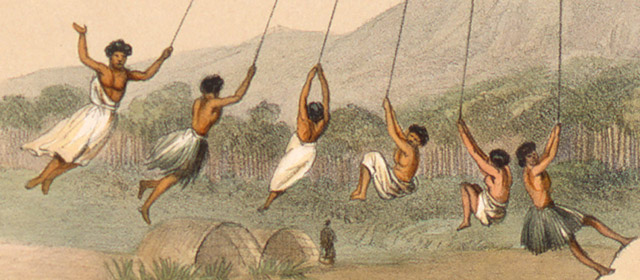Story summary
Traditional childhood
Traditionally, Māori children were raised by their extended family, not just their parents. They were cherished by their hapū (subtribe) because they would be the tribe’s future. At birth they were dedicated to a god.
Children were often adopted by other family members. This was known as whāngai. Grandparents would adopt grandchildren to teach them tribal traditions.
By watching others and copying them, children learnt everyday tasks such as tending gardens or gathering seafood. They also played games such as kite flying and knuckle bones. Some children were sent to whare wānanga (schools of higher learning) to learn sacred rites, karakia and genealogy.
Certain children were promised as a future husband or wife for another child.
Children would receive moko (tattoos) as a sign they were about to grow into adulthood.
European influence
European missionaries taught Māori children reading and writing, as well as new religious beliefs, in mission schools. They introduced new forms of discipline such as physical punishment.
From 1867 a system of native schools began. Children had to speak English in school.
Māori childhood changes
Māori began moving to the cities in the mid-20th century. Children were no longer surrounded by their extended family. Māori families were often poor, and children had worse health and rates of accidents than non-Māori children. Young Māori were more likely to commit crimes.
Māori elders thought that these issues could be addressed by bringing children together at kōhanga reo (Māori-language pre-school) and kura kaupapa Māori (Māori-language schools) to learn their language and traditions.





